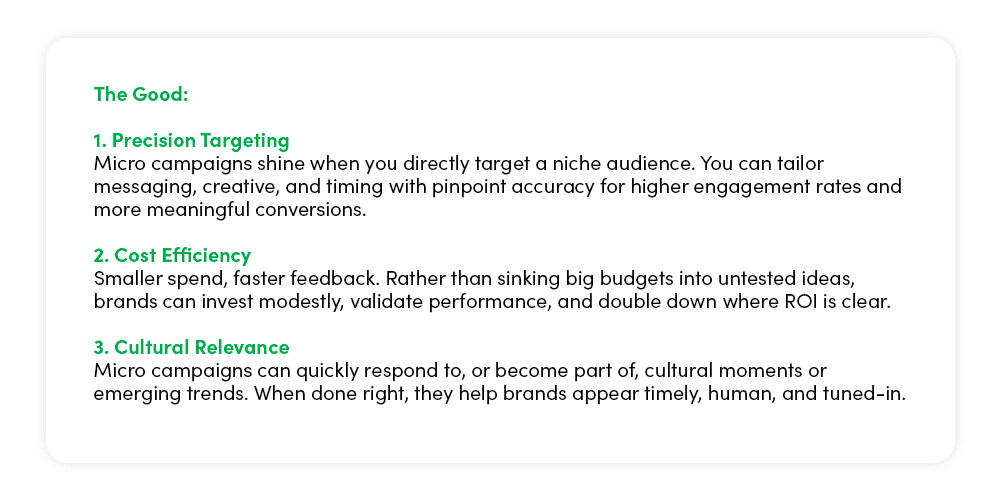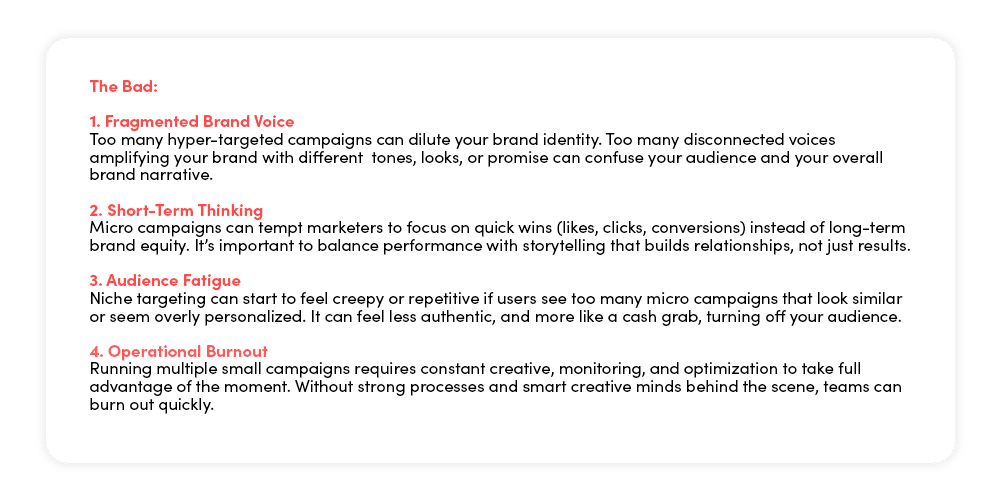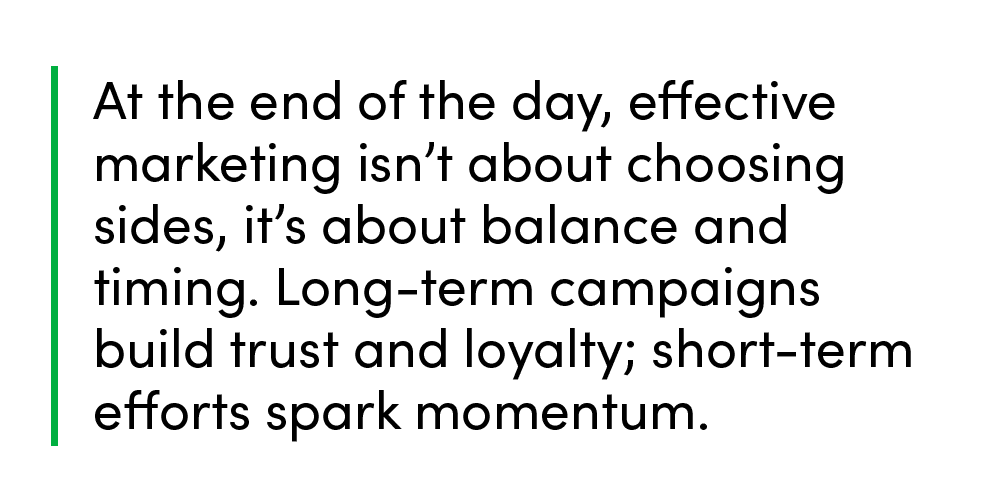Are you looking for growth and loyalty, that might take some time? Or a spike and a quick turnaround that might not last? We’re not going to bury the lede here. Most marketers agree on a 60% long and 40% short split. Now, let’s dig in.
First of all, when we say short and long, what are we talking about? Ryan Smith, (amp) president considers long term 9+ months, and short term is 1-6 months.
He goes on to explain, “Short term campaigns are generally focused on high velocity wins. Long term campaigns are about building loyalty and developing a brand.”

Of course, the 60/40 split isn’t a hard and fast rule.
As Meta Marketing Science points out, not every industry is equal. “Across media, the long-term effect made up 60% of the Total ROI. [But] the size of the long-term effect varied by industry, ranging from 42% in CPG to 76% in Tech & Durables.”
According to Smith, “Long term campaigns are often ideal because it means a brand has a long term vision, direction, and willingness to optimize versus constantly pivoting or being stuck in an endless cycle or test and learn. That said, some businesses (especially eComm) require both short and long term campaigns in order to drive business.”

Investing in lower funnel marketing to drive purchase intent, has also proven to have long-term effects. According to the Nielsen study, by increasing ‘purchase intent’ activities by 1%, short-term sales grow by 0.7% and long-term sales by 0.2%.
What about Micro Campaigns?
Micro campaigns are small, highly targeted marketing initiatives designed to reach a specific audience segment or achieve a tightly defined goal often over a short time frame. It can last a few days, or up to a month.
This could be inviting a small group of micro creators or influencers to a one-off headquarters tour or weekend getaway, or creating a moment, like Pop-Tarts introducing a giant edible mascot to be eaten by the winning college football teams.


So what should you do? Well……
Smith says, “There’s no right or wrong, it all just depends on a company’s needs, budget, target, etc. Long story short… campaign length is a product of many, many factors and requires a deep dive into specific circumstances. It’s kind of like asking which length of wrench is best. Either gets the job done, but one may be better depending on the job at hand.”
But here are some takeaways to consider for your next campaign:
Don’t treat short-term and long-term as adversarial:
Strong brand campaigns can support immediate activation and vice versa. The goal is not “either/or,” but rather optimal synergy and timing.
Be wary of measurement bias:
If your dashboards only show click-through and conversions, you will systematically undervalue brand-led campaigns, even if they bolster your future growth.
Context matters:
The optimal balance shifts by industry, growth stage, competition intensity, category maturity, and margins.
Long-term campaigns compound:
Brand investment is more like compound interest, lost momentum can be hard to recapture, whereas overinvestment in short-term spikes produces diminishing returns.
Creative excellence is a multiplier:
When your creative is emotionally engaging and strategically aligned it works, long or short term. Ads that resonate can do it all.

Some campaigns tell bigger stories that deserve to be sustained and optimized, while others capture a moment in time. And when the moment passes, so should the effort.
Success isn’t found in constant reinvention or blind repetition, but in holding onto what works, making room for what’s next, and keeping your audience’s needs at the center of it all.